In the vast expanse of Texas, eight unique species of falcons carve out their niches, adding to the state’s avian diversity.
With their distinctive characteristics and hunting prowess, these majestic birds of prey paint the Texan skies with a captivating display of nature’s wonders.
From the iconic Peregrine Falcon to the agile American Kestrel, each species finds its place in the varied landscapes of Texas, be it the sprawling deserts, expansive grasslands, or rugged mountains.
These falcons, including the Merlin, Prairie Falcon, and Aplomado Falcon, embody the adaptability required to thrive in the Lone Star State’s diverse ecosystems.
Their presence contributes to the ecological balance and offers birdwatchers and nature enthusiasts an opportunity to witness the beauty of Texas’ falconry heritage.
8 Falcons In Texas
In Texas, eight distinct falcon species soar through the skies, each embodying unique traits and adaptations. These raptors command attention from the Peregrine Falcon’s speed to the American Kestrel’s vibrant plumage.
Enriching Texas’ biodiversity, they navigate the diverse landscapes, showcasing the state’s avian splendor.
1. Crested Caracara
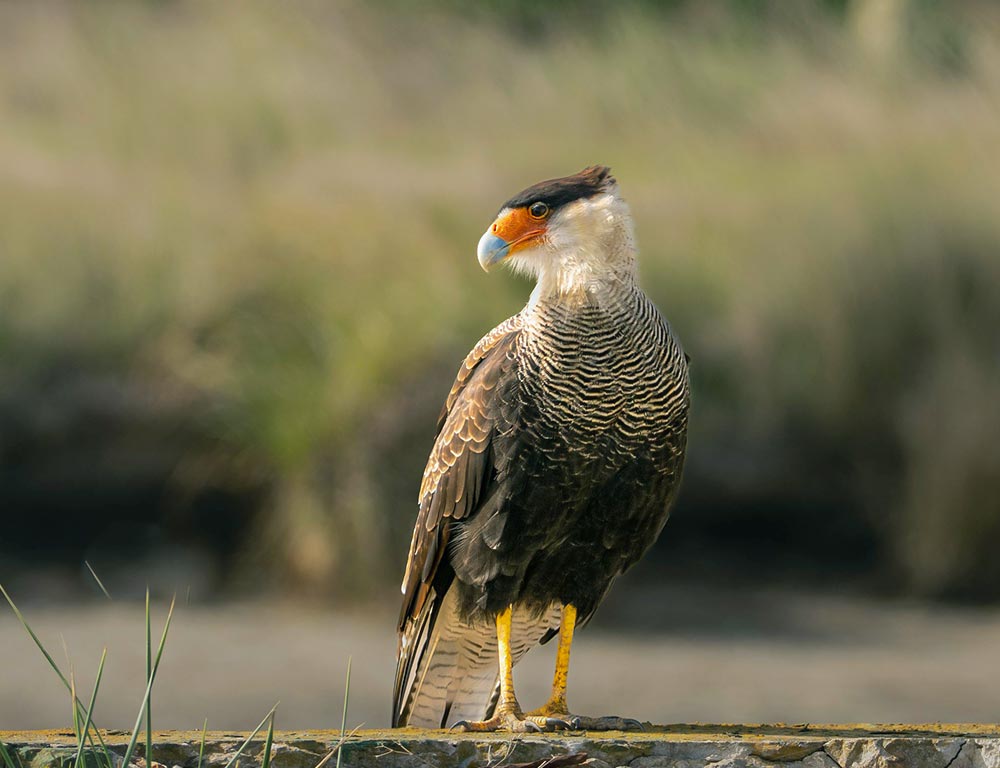
- Scientific name: Caracara cheriway
- Population: Estimated around 1,500 pairs in Texas
- Life span: Up to 20 years in the wild
- Size: 19 to 23 inches
- Weight: 2.2 to 4.4 pounds
- Food: Omnivorous diet including carrion, small mammals, reptiles, and insects
- Wingspan: 4.5 to 4.9 feet
- Status: Not globally threatened; considered a species of least concern
With its distinctive appearance and behavior, the Crested Caracara is charismatic in the Texas skies. Often found in open habitats like grasslands and savannas, they are equally at home in urban areas.
Caracaras exhibit scavenging behavior, feeding on carrion, but they are also skilled hunters of small mammals, reptiles, and insects.
Known for their adaptability, they may form loose colonies and sometimes feed alongside vultures. Crested Caracaras are territorial during the breeding season and engage in elaborate courtship displays.
Their ability to thrive in diverse environments and engage in varied feeding behaviors underscores the resilience of these falcons in the Texas landscape.
2. Peregrine Falcon
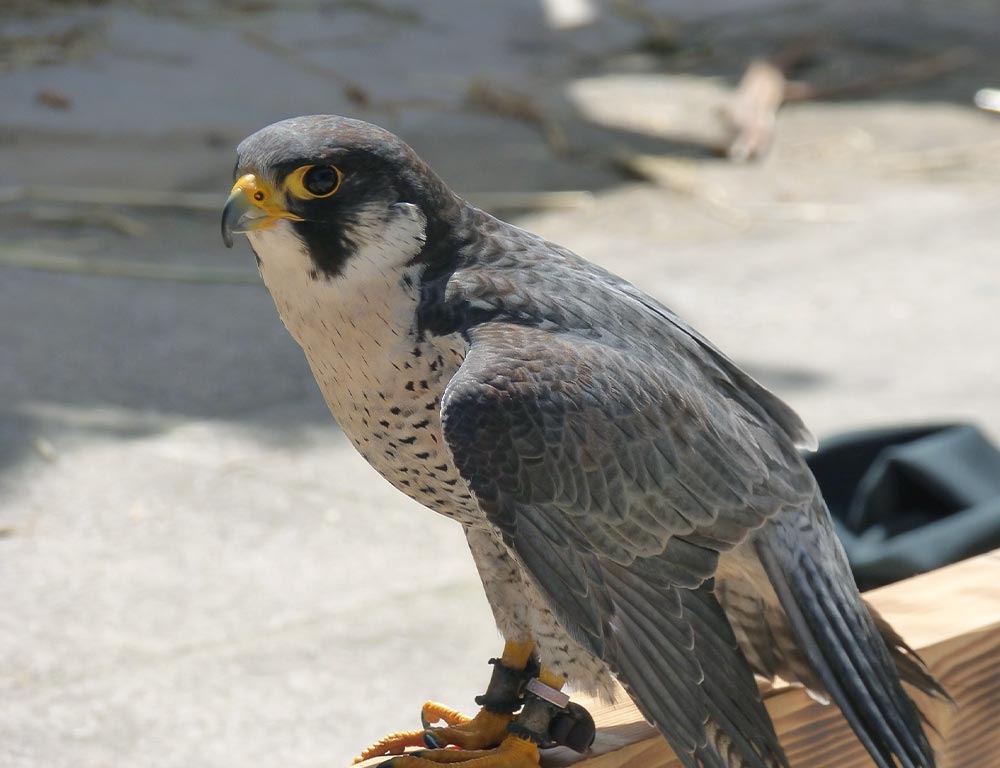
- Scientific name: Falco peregrinus
- Population: Varies, with significant numbers in Texas
- Life span: Up to 15 years in the wild
- Size: 15 to 20 inches
- Weight: 1.5 to 3.5 pounds
- Food: Primarily birds, adept hunters known for high-speed dives
- Wingspan: 3.3 to 3.6 feet
- Status: Recovered from endangered status, now listed as a species of least concern
The Peregrine Falcon, a symbol of speed and precision, thrives in the diverse ecosystems of Texas. Known for their spectacular high-speed dives, they primarily prey on birds.
Peregrines adapt well to both urban and natural landscapes, often nesting on cliffs, buildings, or other high structures.
Their monogamous nature and strong pair bonds contribute to their breeding success. The recovery from endangered status is a testament to successful conservation efforts.
Peregrine Falcons, with their impressive hunting techniques and adaptability, continue to soar through the Texas skies as a testament to the resilience of these magnificent birds.
3. Merlin

- Scientific name: Falco columbarius
- Population: Common and widespread in North America, including Texas
- Life span: Up to 10 years in the wild
- Size: 9 to 13 inches
- Weight: 5 to 8 ounces
- Food: Small birds, insects, and occasionally small mammals
- Wingspan: 20 to 26 inches
- Status: Not globally threatened; considered a species of least concern
The Merlin, a compact and agile falcon, is a familiar sight across Texas, showcasing adaptability to diverse landscapes. Preferring woodlands, grasslands, and urban areas, they are adept hunters of small birds and insects.
Their rapid and acrobatic flight makes them effective predators, and they often nest in abandoned crows or magpie nests. Merlins display solitary hunting behavior, and during the breeding season, they become more territorial.
The Merlin’s ability to navigate and thrive in natural and human-altered environments highlights their dynamic lifestyle in Texas’s vast and varied landscapes.
4. Aplomado Falcon
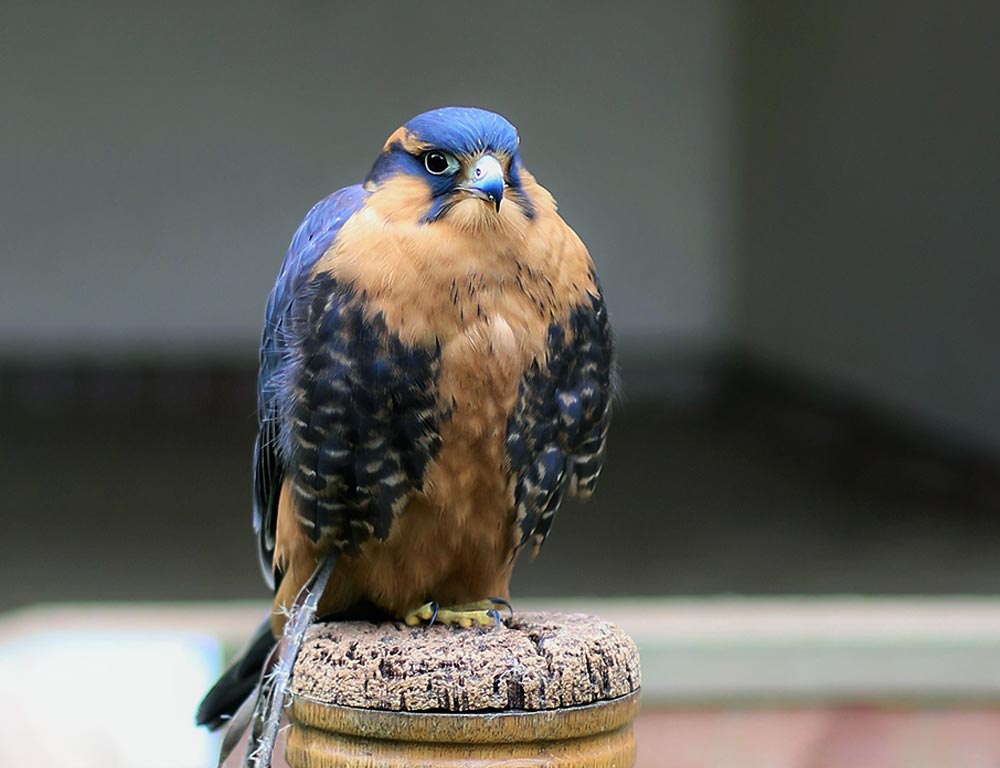
- Scientific name: Falco femoralis
- Population: Endangered, with reintroduction efforts ongoing in Texas
- Life span: Up to 10 years in the wild
- Size: 15 to 18 inches
- Weight: 0.5 to 1.5 pounds
- Food: Small birds, insects, and small mammals
- Wingspan: 3.3 to 3.6 feet
- Status: Listed as endangered; ongoing conservation efforts
The Aplomado Falcon, once extinct in Texas, is the focus of intensive reintroduction efforts.
Once thriving in grasslands and savannas, habitat loss led to their decline. Reintroduction programs aim to restore this falcon’s population to its historical range.
Aplomado Falcons are agile hunters, preying on small birds, insects, and mammals. Reintroduced populations have shown promising signs of adapting to their surroundings, showcasing the resilience of these falcons.
Conservationists work tirelessly to provide suitable habitats and mitigate threats to ensure the Aplomado Falcon’s successful re-establishment in the Texas skies.
5. Collared Forest Falcon
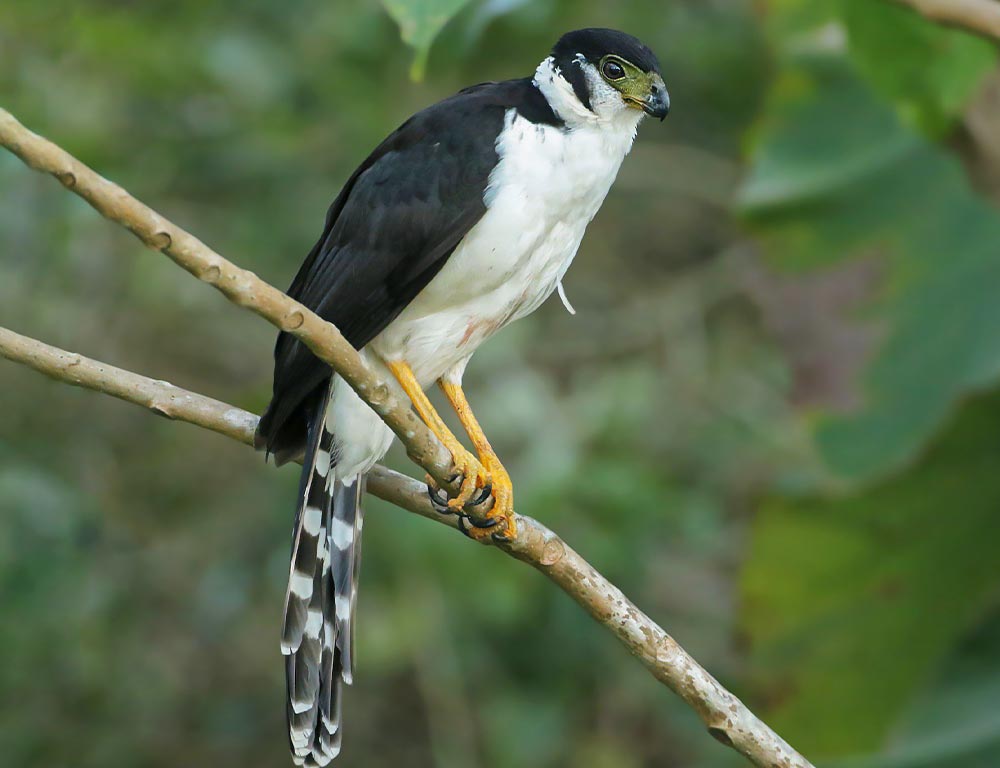
- Scientific name: Micrastur semitorquatus
- Population: Population estimates are not readily available
- Life span: Information on lifespan in the wild is limited
- Size: Approximately 12 to 15 inches
- Weight: Around 200 to 300 grams
- Food: Primarily birds, supplemented by insects and small mammals
- Wingspan: Not widely reported but estimated to be around 24 to 28 inches
- Status: Not globally threatened; considered a species of least concern
The Collared Forest Falcon, a resident of Central and South America, occasionally ventures into southern Texas. Inhabiting dense forests, they are known for their distinctive call echoing through the canopies.
Skilled hunters rely on stealth to capture birds, supplemented by insects and small mammals.
Their adaptability to forested environments and elusive nature make them intriguing, yet the limited data on their population highlights the challenges of studying these elusive birds in their natural habitat.
6. Gyrfalcon
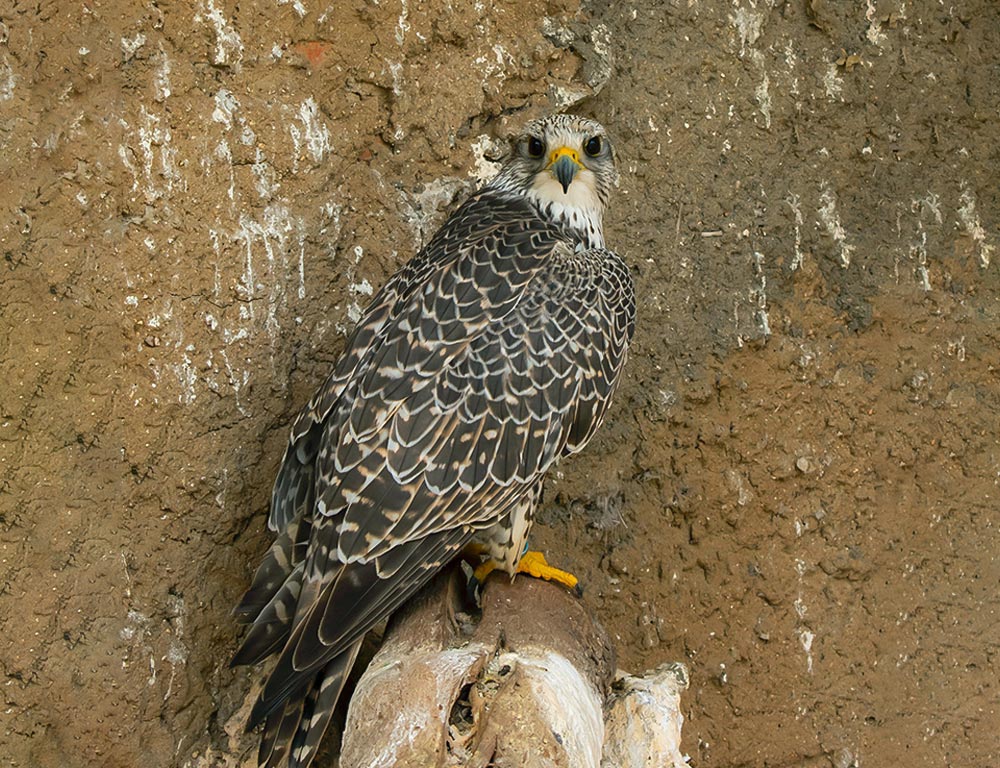
- Scientific name: Falco rusticolus
- Population: Estimates vary, with stable populations in Arctic regions
- Life span: Up to 15 years in the wild
- Size: 20 to 24 inches
- Weight: 2.5 to 4.5 pounds
- Food: Primarily birds, especially ptarmigan; powerful hunters with swift flights
- Wingspan: 3.3 to 3.8 feet
- Status: Not globally threatened; considered a species of least concern
The Gyrfalcon, the largest of all falcon species, dominates the Arctic tundra and subarctic regions. Known for their impressive size and powerful hunting abilities, they are skilled predators of birds, particularly ptarmigan.
Gyrfalcons are adaptable and may also be found in coastal areas and open landscapes. Their striking white plumage, in some individuals, is a distinctive feature.
As masters of the skies, Gyrfalcons exemplify strength and precision, showcasing the adaptability required to thrive in the harsh environments of the Arctic.
7. American Kestrel
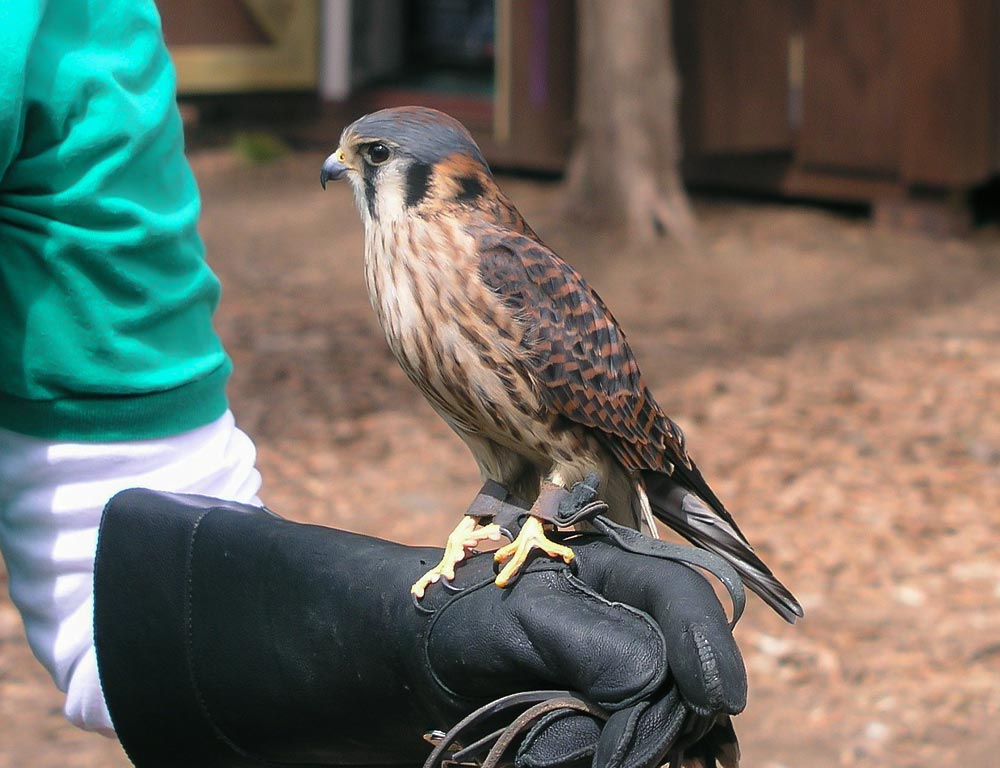
- Scientific name: Falco sparverius
- Population: Common, with around 200,000 individuals in North America
- Life span: 5 to 10 years
- Size: 8 to 12 inches
- Weight: 3.5 to 6 ounces
- Food: Insects, small mammals, birds, and reptiles
- Wingspan: 20 to 24 inches
- Status: Not globally threatened; considered a species of least concern
The American Kestrel, the smallest falcon in North America, is ubiquitous across various landscapes. Preferring open habitats, they are often found perched on wires or hovering in search of prey.
Their diverse diet includes insects, small mammals, birds, and reptiles. Kestrels showcase adaptability by thriving in both natural and urban environments.
Agile hunters with distinctive plumage, American Kestrels play a vital role in controlling insect populations, making them essential contributors to ecosystem balance.
8. Prairie Falcon
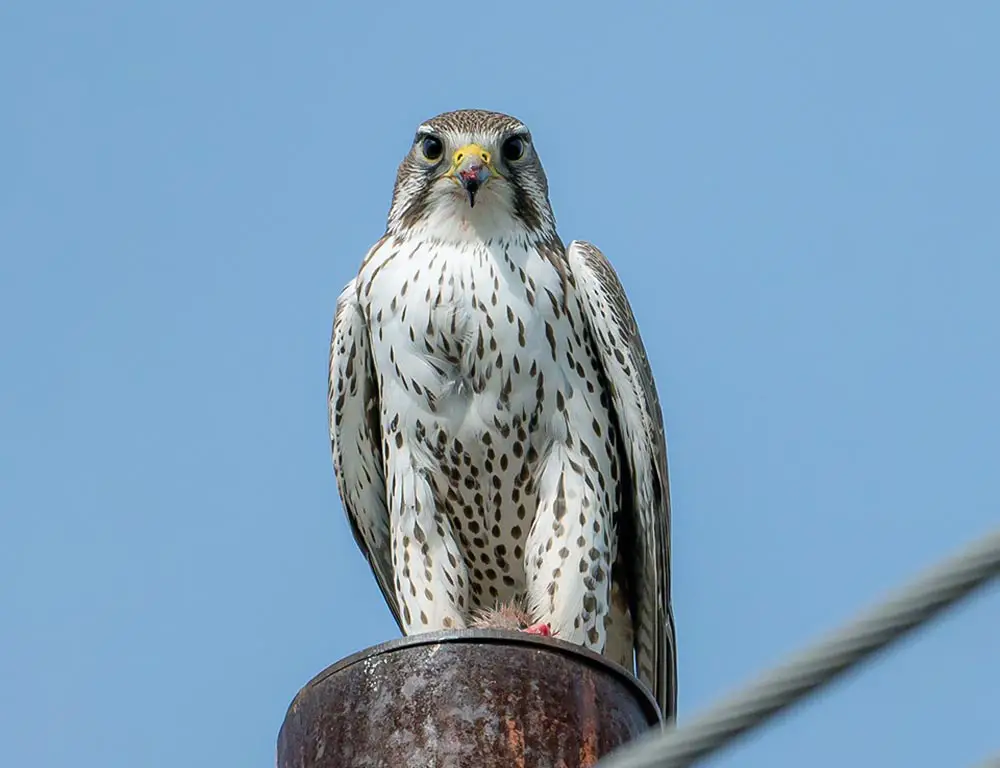
- Scientific name: Falco mexicanus
- Population: Stable, but specific numbers are not readily available
- Life span: Up to 12 years in the wild
- Size: 15 to 20 inches
- Weight: 1.5 to 2.5 pounds
- Food: Small mammals, birds, and occasionally insects
- Wingspan: 3.3 to 3.6 feet
- Status: Not globally threatened; considered a species of least concern
The Prairie Falcon, adapted to open landscapes, is a skilled hunter in the arid regions of North America. With a preference for prairies, deserts, and cliffs, they are often seen soaring in search of prey.
Their diet includes small mammals, birds, and occasionally insects. Prairie Falcons are known for their rapid and direct flight, showcasing remarkable agility and precision in capturing prey.
Nesting on cliff ledges, they exhibit territorial behaviors, establishing their dominance in the vast landscapes they call home. The Prairie Falcon’s ability to navigate and thrive in open spaces characterizes their lifestyle as expert hunters of the skies.
Best Places to Spot Falcons In Texas
With its diverse landscapes, Texas offers avid birdwatchers and nature enthusiasts an excellent opportunity to spot various falcon species.
From coastal areas to expansive prairies, here are six distinctive locations where you can witness the awe-inspiring beauty of falcons in the Lone Star State:
Big Bend National Park
Nestled in West Texas, the varied terrain of Big Bend National Park provides a habitat for raptors like the Peregrine Falcon. Look to the skies above the Chisos Mountains for soaring displays.
Padre Island National Seashore
Along the Gulf Coast, Padre Island National Seashore is a haven for falcons, particularly the Prairie Falcon. The mix of coastal and dune environments attracts these aerial hunters.
Balcones Canyonlands National Wildlife Refuge
Located near Austin, this refuge is home to the endangered Aplomado Falcon. The rocky canyons and grasslands are ideal for observing these rare and striking birds.
Caprock Canyons State Park
Situated in the Panhandle, Caprock Canyons is a prime location for spotting the fast and agile American Kestrel. The park’s rugged landscapes offer a natural hunting ground for these small falcons.
Anahuac National Wildlife Refuge
East of Houston, Anahuac NWR attracts various birds, including the Merlin. Its diverse ecosystems, from marshes to prairies, make it an enticing destination for falcon enthusiasts.
Davis Mountains State Park
In the Trans-Pecos region, Davis Mountains State Park provides opportunities to observe the majestic Prairie Falcon. The open spaces and mountainous terrain create an ideal environment for these birds of prey.
Whether perched on rocky outcrops or executing breathtaking aerial maneuvers, these locations offer a glimpse into the fascinating world of falcons, showcasing the dynamic beauty of these remarkable birds in the diverse landscapes of Texas.
Wrapping Up
The majestic falcons of Texas epitomize the state’s diverse avian heritage. Sustaining their populations requires a holistic approach encompassing habitat conservation, awareness, and community involvement.
The unique landscapes of Texas, from the Davis Mountains to the Gulf Coast, offer critical environments for these birds of prey.
Balancing urban development with conservation efforts is crucial for ensuring the continued presence of falcons in the Lone Star State.
As guardians of ecological harmony, falcons weave an integral part of Texas’ natural tapestry, deserving of our collective commitment to preservation and appreciation.